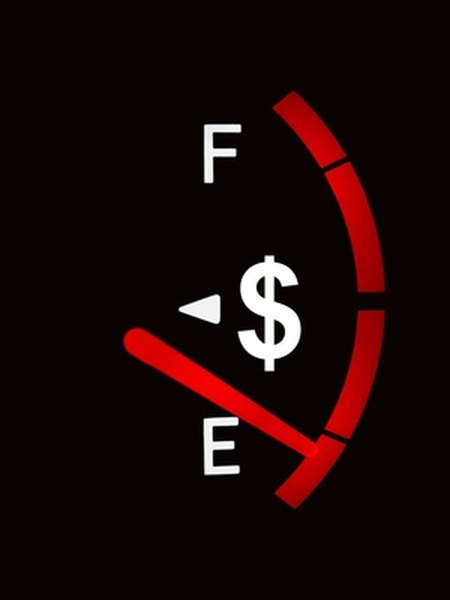
If your boat needs a new fuel gauge, odds are you'll want to install it because it's too simple to take to a repair shop or your boat dealer. Different brands of gauges and different gauges from the same manufacturer have a variety of connection types. Some use a screw to make the connection to the terminal on the fuel gauge or a clip for the connection while others require you to solder the wires to the terminals. If you know what wire to connect to which terminal, the only decision you face is where to put the gauge.
Items you will need
14-gauge wire, red
14-gauge wire, yellow
Vinyl electrical insulator spray
Connect a 14-gauge wire (red) from the ignition switch to the "I" terminal on the back of the fuel gauge, then spray the connection with vinyl electrical insulator spray.
Connect the wire from the sending unit to the "S" terminal on the back of the fuel gauge. Whether the connection is a clip connection or a screw connection, spray it with vinyl electrical insulator spray after making the connection.
Connect a yellow, 14-gauge ground wire from the negative (-) terminal on the gauge to your boat's common ground or common grounding buss. Whether the connection to the fuel gauge is a clip connection or a screw connection, spray it with vinyl electrical insulator spray after making the connection.
Warnings
- The most common problem with fuel gauges reading incorrectly is the "S" wire or the sending unit at the fuel tank. The insulation on the "S" wire may be rubbed off and is now rubbing against a metal part, causing it to short out and give a constant "Full" reading. This may also happen if the wire is incorrectly connected to the "I" post. Or the wire may be disconnected at the sender or the "S" post, giving a constant "Empty" reading. A consistent "Empty" reading may also occur if the wire is connected to the negative post on the gauge.
Tips
- Ground wires for DC (direct current, i.e., 12 volt) marine applications are yellow; black ground wires are used for AC (alternating current, i.e., 110 to 125 volts).
References
Tips
- Ground wires for DC (direct current, i.e., 12 volt) marine applications are yellow; black ground wires are used for AC (alternating current, i.e., 110 to 125 volts).
Warnings
- The most common problem with fuel gauges reading incorrectly is the "S" wire or the sending unit at the fuel tank. The insulation on the "S" wire may be rubbed off and is now rubbing against a metal part, causing it to short out and give a constant "Full" reading. This may also happen if the wire is incorrectly connected to the "I" post. Or the wire may be disconnected at the sender or the "S" post, giving a constant "Empty" reading. A consistent "Empty" reading may also occur if the wire is connected to the negative post on the gauge.
Writer Bio
Will Charpentier is a writer who specializes in boating and maritime subjects. A retired ship captain, Charpentier holds a doctorate in applied ocean science and engineering. He is also a certified marine technician and the author of a popular text on writing local history.



